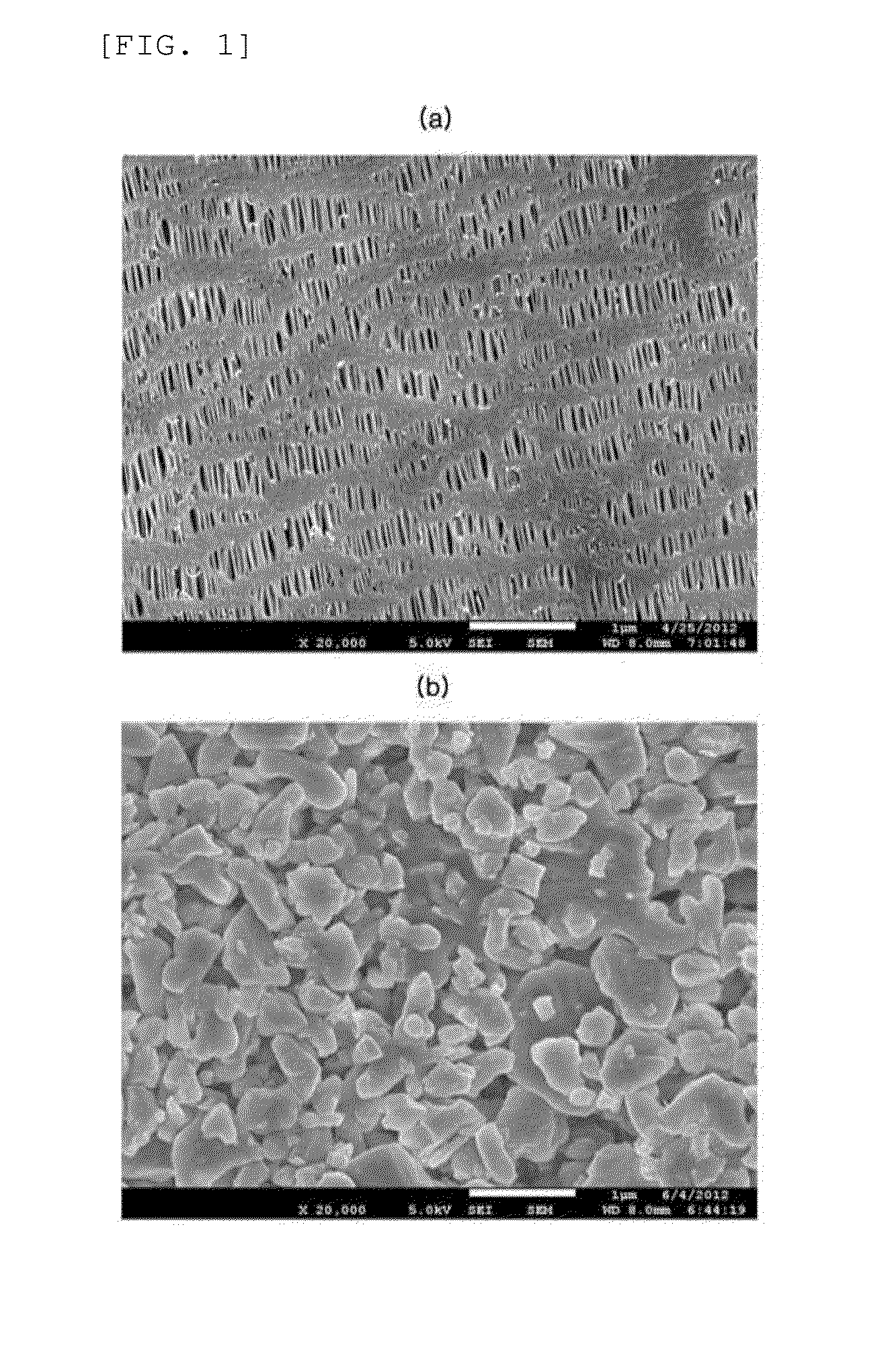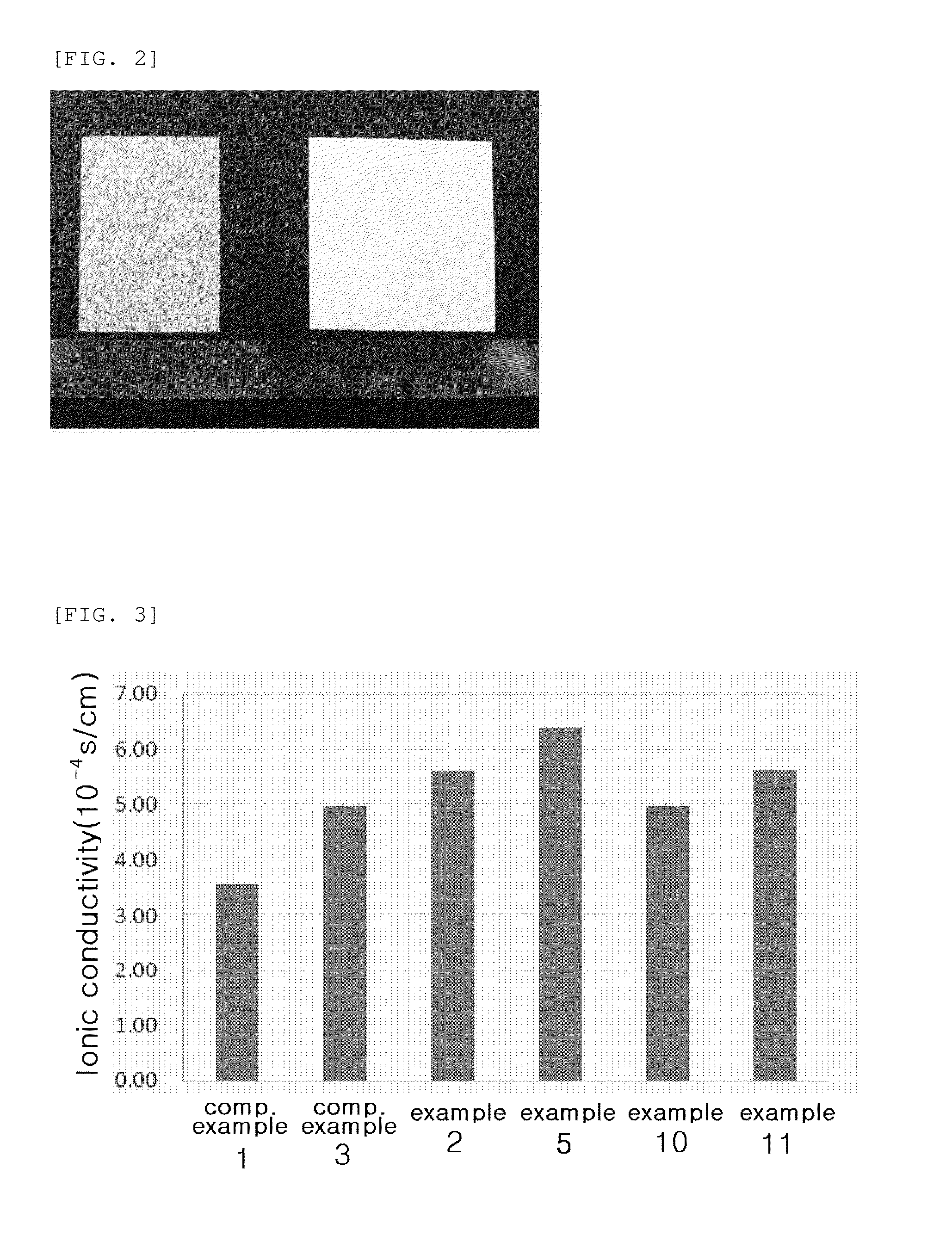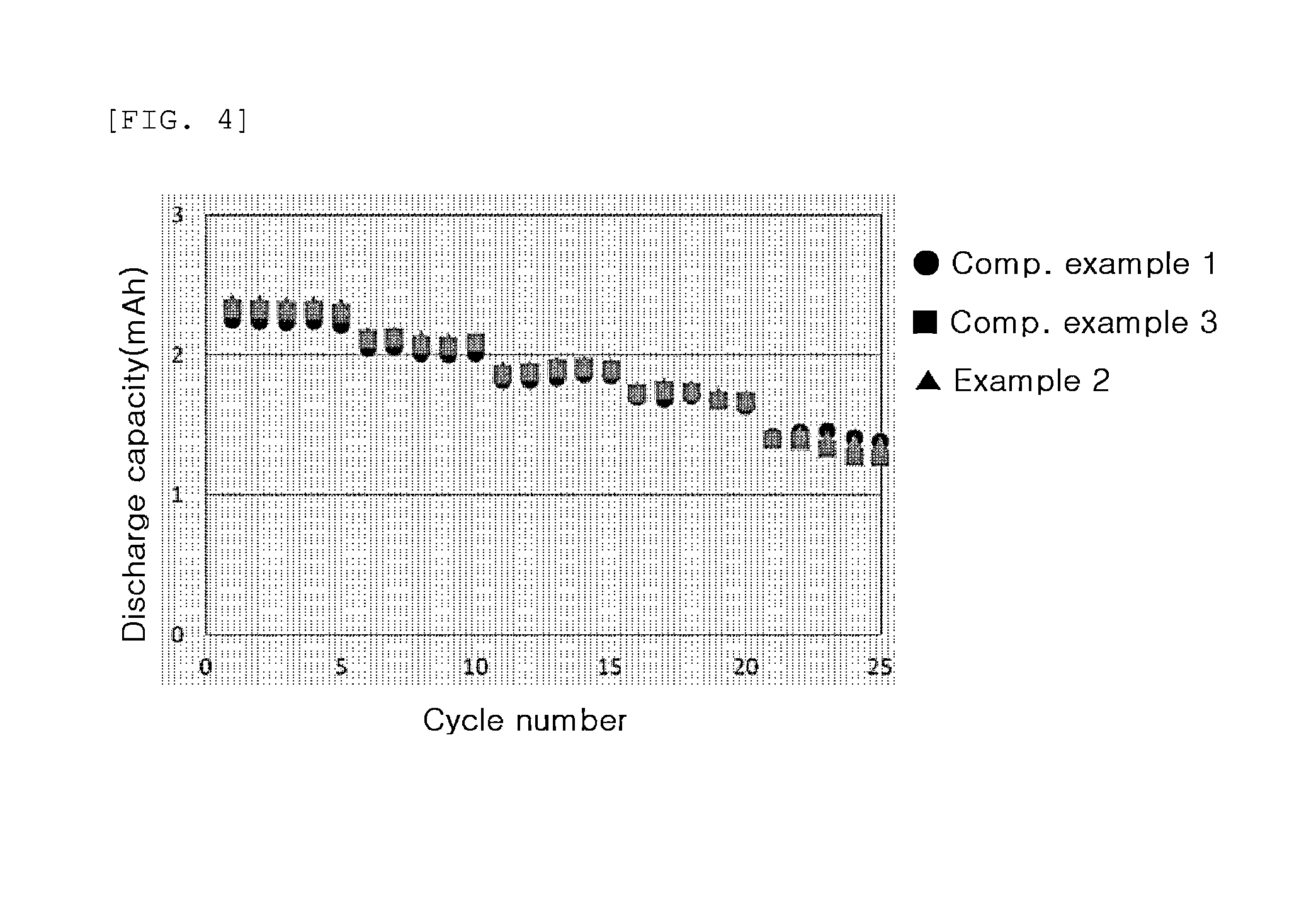Porous separator coated with organic/inorganic complex using aqueous coating solution, method for manufacturing same, and electrochemical device using same
a technology of organic/inorganic complex and coating solution, which is applied in the field of porous separator coated with organic/inorganic complex using aqueous coating solution, method for manufacturing same, and electrochemical device using same, can solve the problems of reducing affecting the performance of the battery, and affecting the stability of the battery, so as to improve the safety of thermal and electrochemical devices, the effect of preventing thermal contraction at a high temperature and reducing the pri
- Summary
- Abstract
- Description
- Claims
- Application Information
AI Technical Summary
Benefits of technology
Problems solved by technology
Method used
Image
Examples
examples
[0066]The present invention can be modified and changed in various ways and may include various exemplary embodiments. Although preferred Examples are provided as follows for easy understanding of the present invention, the following Examples are provided just for illustrating the present invention but not for limiting the scope of the present invention.
[0067]The property measurement methods applied in the following Examples, Comparative Examples, and Experimental Examples are as follows.
[0068]Property Measurement Method
[0069]1. Coating Thickness Measurement Method
[0070]As a coating thickness gauge, a digimatic thickness gage 547-401 (Φ6.3 mm flat tip type, pressure of 3.5 N or less for measurement) manufactured by Mitutoyo was used for measurement, and a difference between a thickness of a coating separator and a thickness of an original film before coating was calculated.
[0071]2. Adhesive Strength Measurement Method
[0072]After a tape of 18 mm×20 mm (adhesion area) was attached ont...
example 2
[0086]An organic / inorganic complex coating porous separator and a lithium secondary battery including the same were prepared in the same manner as Example 1 except that instead of water, a third organic binder aqueous solution prepared by adding sodium carboxyl methyl cellulose (CMC) in an amount of about 0.5 weight % to water and dissolving at 50° C. for about 2 hours was used for preparing waterborne inorganic slurry containing a polyacryl polyether copolymer as a second organic binder and Al2O3 powder.
[0087]As a result, air permeability of the coating separator was 240 sec / 100 cc, which was equivalent to that of Example 1, and a thermal contraction rate was decreased to 3.3% as compared with Example 1.
example 3
[0088]An organic / inorganic complex coating porous separator and a lithium secondary battery including the same were prepared in the same manner as Example 2 except that instead of sodium carboxyl methyl cellulose (CMC), starch was used as a third organic binder.
[0089]As a result, the coating separator exhibited air permeability of 250 sec / 100 cc and a thermal contraction rate of 4%, which were substantially equivalent to those of Example 1.
PUM
 Login to View More
Login to View More Abstract
Description
Claims
Application Information
 Login to View More
Login to View More - R&D
- Intellectual Property
- Life Sciences
- Materials
- Tech Scout
- Unparalleled Data Quality
- Higher Quality Content
- 60% Fewer Hallucinations
Browse by: Latest US Patents, China's latest patents, Technical Efficacy Thesaurus, Application Domain, Technology Topic, Popular Technical Reports.
© 2025 PatSnap. All rights reserved.Legal|Privacy policy|Modern Slavery Act Transparency Statement|Sitemap|About US| Contact US: help@patsnap.com



